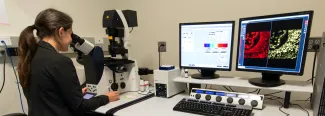Undergraduate Research Highlights at UNE
Explore the research of undergraduate students at the University of New England, featuring student scholars, faculty mentors, and projects that advance knowledge across diverse disciplines. These highlights show how hands-on inquiry and mentorship prepare students to lead and innovate in their fields.
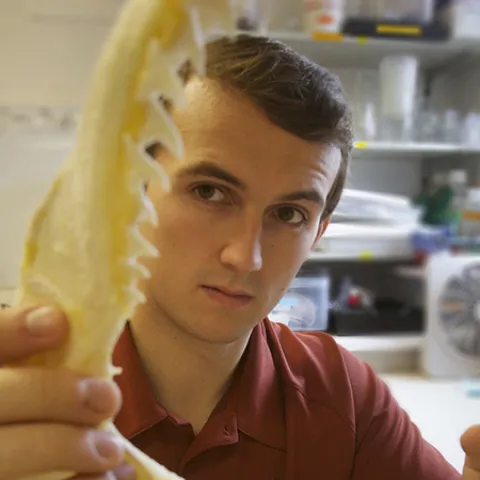
Joseph Langan and the Sea
Joe Langan ’15 knew he wanted to be a marine biologist ever since he was a small boy. He’s been a fisherman for as long as he can remember. With a carrier on his back, Joe’s father Dave frequently took his infant son along on fly-fishing trips along the banks of the Delaware River, near their family camp in the Catskill Mountains of New York. Langan says wryly, “I was hooked,” and the shared father-son passion continues to this day.
But it was a second-grade school project that provided Langan with the “ah-hah” moment that sealed his career fate. The project was entitled “Flat Stanley,” based on a character from a popular book of the same name. Schoolchildren created and mailed a hand-colored paper doll to people around the country–friends, family, celebrities–asking recipients to document and report back on Flat Stanley’s interesting experiences.
"I remember mailing Flat Stanley to my cousin who was working on a research vessel in Florida. He sent back a photo of himself and Flat Stanley on the boat, surrounded by fish, and I was so excited to realize that you could do that for a living; I knew that’s what I wanted to do.”
Langan, now a University of New England Marine Biology/Mathematics double major, retains his child-like enthusiasm as he talks about his future career in fisheries sustainability and management. But make no mistake–this national Goldwater Scholar is flat-out serious about his academics, research, and focused plans to reach that dream.
“I love the mathematical side of managing fisheries…the quantitative ecology. We know we can’t possibly count all of the fish, but how can we save them?” he muses.
Langan and UNE graduate student Connor Capizzano are working together on a National Oceanic and Atmospheric Administration (NOAA) grant-funded project led by associate professor of marine science James Sulikowski, Ph.D. They are researching the impact that recreational fishing has on Atlantic cod, a commercially important species that has been overfished in New England for centuries, and whose population has failed to rebound under current management plans.
The recreational fishery accounts for about one-third of the cod landed in the Gulf of Maine each year, but twice as many fish are thrown back as are kept. A deep cold-water fish, cod are particularly susceptible to environmental factors, including increasing water temperatures due to climate change.
The UNE research looks at the resulting discard mortality of cod populations. Langan is developing mathematical mortality models while Capizzano assesses the human impact, and their results could be used to develop better management plans that ultimately rebuild Atlantic cod stocks.
Langan never intended to be a Math major, but the high achiever entered UNE with 27 transfer credits he earned through AP and college-level courses, and Sulikowski suggested it, knowing the combination would be a tremendous asset. Langan met briefly with mathematics associate professor Susan Gray, Ed.D. during his first week at UNE.
“She was very kind and encouraging . . . she sweet-talked me into it. I left her office thinking, ‘what did I just do?’” laughs Langan, adding, “But seriously, it was the best decision I ever made.” The dual major laid the groundwork for his continued academic success at UNE. When the NOAA grant was awarded to UNE, Sulikowski recognized it presented many opportunities for modeling, Langan’s area of expertise and interest, so it was fitting to involve him in the research.
Being equipped to cast for opportunity when it arises is a finely honed trait Langan developed years ago, with lessons learned from “the one that got away.” To prepare for his first saltwater fishing trip with his father at age 10, he read articles about what to expect, what to bring, and the kind of gear to use.
Langan was fishing for striped bass using live eel as bait, best suited for a heavy, saltwater rod. “I had to use a spinning rod of mine designed for freshwater–so I protested, but being my first time, my dad said, ‘It’ll be fine.’ On our first night, I cast, felt a big tug, and hooked one…what are the odds? The fish took off and emptied the reel before breaking the line and off it went! I looked at my dad and said, ‘I TOLD YOU SO!’”
Future excursions were far more successful, and his vision never wavered. Langan again has set his sights high in planning for graduate school and a career in fisheries management. Bridging what he perceives to be a communications gap between scientists, politicians and the public is something Langan aspires to.
“I want to be directly involved with policy decisions, to help change things. Many species, along with the industry they support, are in trouble. We need to overcome the disconnect and work together to create a multidisciplinary solution, because we know what’s happening now isn’t working.”
I want to be directly involved with policy decisions, to help change things. Many species, along with the industry they support, are in trouble. We need to overcome the disconnect and work together to create a multidisciplinary solution, because we know what’s happening now isn’t working.
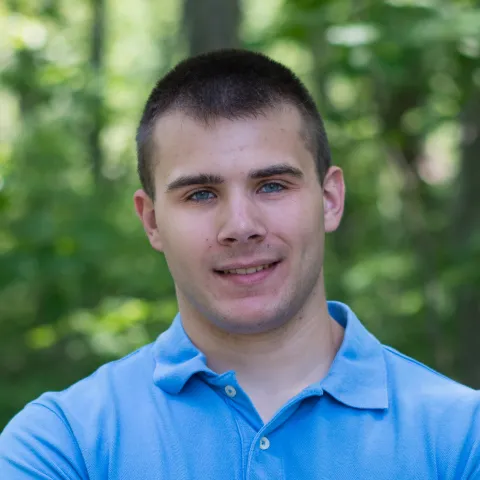
Justin Brewer, on a Journey to Personal Fulfillment
There aren’t too many people who can credit childhood hours spent watching cartoons with shaping the direction of their adult lives. But for Justin Brewer ’15 those pajama-clad Saturday mornings have already led to a Summer Undergraduate Research Experience (SURE) grant, and will soon lead to a semester abroad in Japan.
Like virtually all American kids of his generation, Brewer grew up during the boom time of anime — Japanese movie and television animation — often infused with a science-fiction theme. It sparked in him a lifelong fascination with East Asian culture.
After starting his UNE career on the pre-med track, planning to follow in the footsteps of family members who work in health care, Brewer realized that his true passion was in literature, and switched to a major in English.
When his interest was piqued by coursework in Professor Susan McHugh’s Literary Criticism and Theory class involving Journey to the West — a 16th century Chinese novel — Brewer decided to pursue a summer research project on the trickster character type in East Asian lore and to contrast it with the tricksters found in other literary traditions.
Brewer’s idea earned him a SURE grant to spend the summer of 2014 delving into his study of these characters that disobey the conventional traditions and expectations of society.
So ubiquitous in Chinese culture is Journey to the West, that, according to Brewer, “In China, at any given time, you can find at least one show based on the story airing on TV.” At its core, he says, “It is a fable based on Buddhist ideals, such as humility, self-sacrifice, finding one’s inner self, and seeking nirvana.”
The novel, whose authorship is credited to Wu Cheng’en, details the journey of Xuanzang, a monk who is given the task by the Buddha of traveling to the “Western Regions” to obtain sacred texts. Xuanzang is given three protectors to accompany him, one of whom is Sun Wukong, a monkey. The story is an extended allegory in which the characters journey toward personal enlightenment.
According to Brewer, the monkey serves as the trickster of the story. The folklore of other cultures also features tricksters that appear as animals. For example, in certain Native American tribes, the coyote and raven play the role, while in the Caribbean it is the spider, and in Europe, the fox.
Brewer believes that a unifying element of the trickster is an ability to spark growth in others. “Because they are not bound by the traditional rules of society, they are catalysts for change,” he explains. He points to an example toward the end of the story that depicts a change in Sun Wukong, himself, which stimulates others to change. Having previously displayed contempt for people who cannot provide for themselves, Sun Wukong ends up using his divine gifts, which he had acquired for self-serving purposes, to help poor villagers. As a result, the villagers become more charitable toward one another.
Brewer’s interest in East Asian culture has manifested not only in his research project on tricksters but also in his mission to study in the region. He has already completed the first portion of a self-study course in Japanese in preparation for an anticipated Spring 2015 semester abroad in Japan.
It seems that in a way, Brewer has been on his own quest for self-discovery. By leaving one major to follow his true passion, he is embarking on his own personal journey. With his sights set on a culture that has captivated him since childhood, one might say he is on his own “Journey to the East.”
So ubiquitous in Chinese culture is Journey to the West, that, in China, at any given time, you can find at least one show based on the story airing on TV. At its core it is a fable based on Buddhist ideals, such as humility, self-sacrifice, finding one’s inner self, and seeking nirvana.
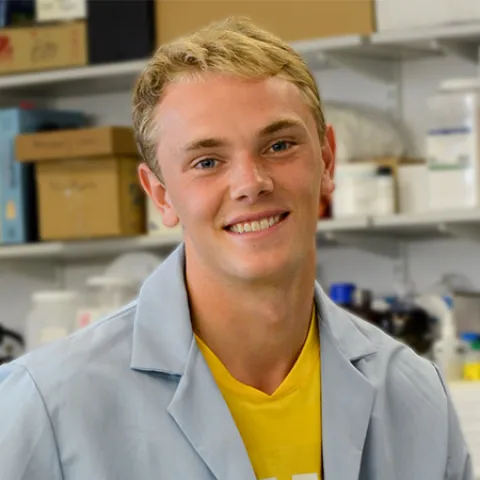
The Many Passions of Aidan McParland
Athlete. Entrepreneur. Explorer. Scientist. Student. World Traveler.
These seven words capture the varied personas of Aidan McParland, ’15 (Medical Biology and Oceanography), a Brockville, Ontario native spearheading UNE’s first TED conference this fall.
For the uninitiated, TED conferences gather people from the technology, entertainment, and design arenas to share short but thought-provoking talks.
A TED enthusiast, McParland’s favorite talk is “The Intelligence of Crows,” in which the speaker shares a fascinating story of how crows were trained to pick up pennies and place them into a vending machine for a peanut reward through a cultural adaptation experiment.
“That video embodies what TED is — innovation through knowledge. With TED, if you have only 20 minutes, you can learn about anything,” says McParland.
Unable to attend a conference on his own, McParland decided to bring TED to UNE via its community-level version, TEDx. He and his fellow organizers lined up presenters for the November TEDxUNE, themed Inspiration. “We wanted to showcase the brilliance of UNE and our community,” he says. The group aims to host two TEDxUNE events a year.
McParland’s entrepreneurial vision began long before arriving at UNE. He picked up soccer at the age of 5 and began traveling as a goalie with the Canadian national training league at 14. In need of a flexible summer job after his sophomore year in high school, he heard about the government-sponsored Young Entrepreneurs Program, submitted a business plan for a soccer canteen, and was funded. He made some mistakes, took some good advice (“know your worth”), and evolved it into a successful snow cone and cotton candy enterprise called “the Boss of Floss” that netted more than $12,000 in its third season.
Now captain of UNE’s soccer squad, 2012 MVP, and male athlete of the year, McParland shares a similar philosophy on and off the field: “I don’t usually get scored on the same way twice. It’s the same scenario in my life. I think about what I will or won’t do the next time. It’s never too late to make something right. Everyone on this planet has been given an amazing opportunity to be here, to fix
the future.”
McParland’s eye on fixing the future is rooted in past experiences. He took a year off after high school and traveled around the world with his father, a geologist who wanted to introduce him to his field of work. They saw lava flows in Hawaii (where McParland learned to surf), toured the back country of Australia and New Zealand in a pop-up camper, and explored the jungles of Ecuador, where McParland met several doctors working in impoverished areas.
“That’s when I decided that’s what I want to do. I’ve always wanted to work with people to make a difference, and I believe I can do that with medicine,” he says.
He began working in Dr. Geoffrey Ganter’s lab his freshman year, studying the mechanisms behind pain, an area he continues to pursue enthusiastically. “Research opportunities at UNE are completely unique. I have friends at Harvard, Yale and the University of British Columbia, who are very jealous of the research work I do here.”
While he is leaning toward medical school and a career in emergency medicine, McParland, an avid surfer, is also considering ways he might connect that with his other love and major—Oceanography.
He ponders a future practice related to ocean healing. “When I’m sitting on my board and looking back at the land, it clears my head and changes my perspective on everything. It’s where I do my best thinking. I think that would be a neat thing to pass on.”
When I’m sitting on my [surfboard] and looking back at the land, it clears my head and changes my perspective on everything. It’s where I do my best thinking. I think that would be a neat thing to pass on.
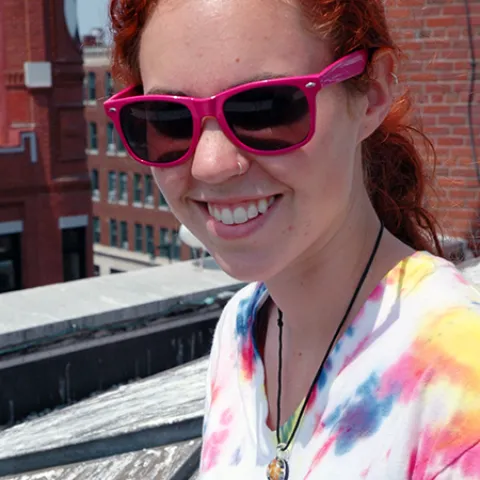
The Gulls and Squirrels of Sarah Kelting
People tend to see gulls only as pests because they can make a mess, explains Sarah Kelting ’14, a University of New England Environmental Studies major who has been conducting research on gulls.
“But people don’t see the good side of gulls,” Kelting says. “How the adults care for their young and how they live so long – for about 30 years. Gulls are a common mystery that no one knows about or takes the time to care about.”
Kelting, along with Sara Winchenbach ’12, an Animal Behavior alum, spent much of the 2012 summer working with Noah Perlut, Ph.D., assistant professor of environmental studies, and Margaret Friar, Ph.D., associate lecturer in biology, on the second year of a research project that explored the costs and benefits of rooftop nesting by herring gulls.
Kelting’s involvement in the project was supported by a College of Arts and Sciences undergraduate student summer research grant.
As people have pushed into prime wildlife habitat, they have displaced many animals by taking their nesting grounds. Frequently wildlife learn to live among us, which Dr. Perlut says is a very good thing.
“This is a native species that can make a mess,” he explains, “but they are so iconic - when you go to the ocean, you expect to see gulls. If you didn't see gulls when you were eating a lobster in Maine, something would seem amiss.”
While herring gulls traditionally nest on islands, a group of herring gulls has made several buildings in Portland its home. The Portland Museum of Art building, in particular, has attracted a large number of breeding pairs.
The researchers during the summer gathered data on nest success, clutch size, nestling growth, and the timing of nesting. They are comparing this urban population to an island population studied by researchers at Tufts and Cornell on Appledore Island, Isle of Shoals, off the coast of southern Maine.
In addition, the UNE team color-banded both adults and chicks to follow their dispersal movements and survival. They have received winter reports of birds that they banded on the Portland roof-top colony as far away as Dayton Beach, Florida.
In the first year of the rooftop research project, all of the gull breeding was identical to the islands. They laid the same number of eggs, the same number of eggs hatched, they fledged the same number of young.
During the second year of the project, the team had access to 11 rooftops.
“Gulls don’t seem to nest on the black rubber rooftops,” Kelting said. “They prefer rooftops that are covered with rocks, similar to their island habitats.”
At the end of summer, Kelting presented preliminary findings at the College of Arts and Sciences Summer Undergraduate Research Symposium. She plans to present further findings from the project at the College’s larger Spring Undergraduate Research Symposium.
Kelting, whose hometown is Enfield, Conn., has been involved in research since her freshman year at UNE.
During her first semester, Kelting began working with marine scientist Aurora Elmore, Ph.D., at UNE’s Marine Science and Education Center.
“My research entailed the sampling of deep-sea sediment off the southern shores New Zealand and identifying microscopic fossilized organisms to be analyzed for their chemistry,” Kelting explained. “I was fortunate enough to receive a grant to continue with my research into the summer and enjoy Maine’s ‘vacationland’ in all of its glory. UNE has really helped me start building connections as well as a reputable resume from the get-go.”
During her third year at UNE, she has been working with Dr. Perlut on his ongoing Project Squirrel. Using mark-recapture techniques and radio telemetry, his team of student researchers has been exploring movement patterns and survival rates of the eastern gray squirrel on campus and the surrounding community.
“What I learned from my experiences at UNE is how to work with people to accomplish the research, Kelting says. “For the gull project, we had to ask building owners if we could conduct research on their rooftops, creating a situation of possible liability for them but still convincing them of the value of that risk. I learned a lot of life skills.”
She adds that her research has also “helped me adjust to change. I’ve worked with a lot of different projects with different faculty members and different students.”
I was fortunate enough to receive a grant to continue with my research into the summer and enjoy Maine’s ‘vacationland’ in all of its glory. UNE has really helped me start building connections as well as a reputable resume from the get-go.
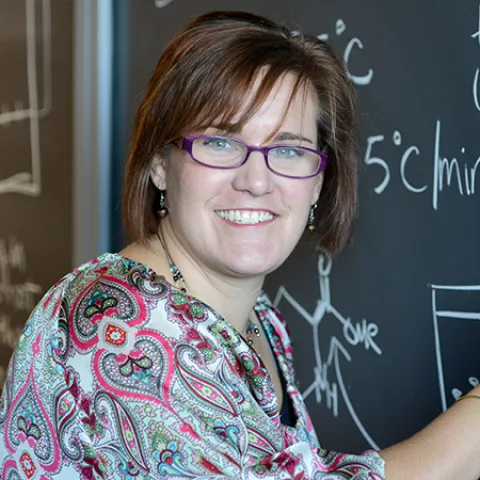
Amy Deveau gets students “charged up” about Chemistry
As an undergraduate student in biology class, when it came time for the fetal pig dissection, Amy Deveau thought she would throw up. “Actually, I think maybe I did throw up,” she remembered. Realizing that dissections, with all their blood and gore, were not for her, Deveau, who had always excelled in the sciences, reaffirmed her belief that the study of chemistry was the right path for her to take.
At Stonehill College, Deveau, originally from East Millinocket, Maine, majored in chemistry and secondary education. She aspired to be a high school chemistry teacher. It seemed like a great fit for someone with a passion for chemistry who also loved working with students. She eventually realized, though, how much she enjoyed research and concluded that teaching undergraduates at the college level would give her the best of both worlds—the ability to conduct her own research and the opportunity to instill in young people a love of chemistry.
So after earning her Ph.D. from the University of Virginia and completing post-doctoral training at the University of Vermont, Deveau jumped at the chance to apply for a position at UNE—a university that also satisfied her need to be in a setting not drastically different from the one in which she grew up. “I never was a big city girl,” she explained, while sitting cozily in her office on a rainy September morning.
“UNE has been a great fit for me,” she said. “It’s small, but it’s not too small, and there is so much potential for innovation and growth. It has a real dynamic nature.” Deveau also noted that as a chemistry professor, she appreciates the University’s relationship with the health sciences, perhaps because one of her areas of interest lies in the crossroads of chemistry and biology: medicinal chemistry. She is especially interested in the biochemistry of the opioid system and has conducted cutting-edge research, as she successfully built molecules capable of reversing an overdose of a certain class of drugs, allowing for detoxification without withdrawal symptoms, and easing side effects in people who are required to take the medications on a long-term basis.
Despite her success in the laboratory, Deveau says that she would never want to move toward a career without the teaching component. “I wouldn’t want to run a massive lab and pump out publications,” she explained. “I want to foster independence and understanding in undergrads and get them to be the best scientists they can be.”
Warm and out-going, Deveau has many qualities that would be stifled by exclusive lab work. “I could never just be in a lab all day, every day,” she said, “without people to talk to.” With a genuine commitment to being the best instructor possible, even Deveau’s research interests include studies of how to ensure that her students get the most out of their chemistry class. “Having a background in education, I am always thinking about how I can be a better teacher and develop more interesting materials for my students,” she said. Deveau is particularly interested in learning-style differences and how to present materials in ways that optimize students’ comprehension.
Of course, teaching and researching are not mutually exclusive. One of Deveau’s goals is to engage her students in research. “I want to put them in a role where they can contribute intellectually to the work,” she explained. “And that’s very time-consuming, but very, very rewarding.”
It’s no wonder that Deveau’s greatest honor in her career has nothing to do with her impressive accomplishments in the lab, but rather that she was asked to hood a former student (ceremoniously placing a hood over a new graduate’s head) upon her completion of medical school at UNE’s College of Osteopathic Medicine.
“That meant so much to me,” she said. “It was such a special moment.”
One need not spend a great deal of time with Deveau discussing chemistry before noticing her natural inclination to break down difficult concepts and explain things in terms understandable to her audience. “Let me find you a good picture,” she said as she scanned her computer files to find just the right document to illustrate what she had been explaining. With her extensive knowledge and her eagerness to share it, it’s easy to see that she has the brain of a chemist and the heart of a teacher.
When it comes to her passions, no dissection is needed.
I want to foster independence and understanding in undergrads and get them to be the best scientists they can be.
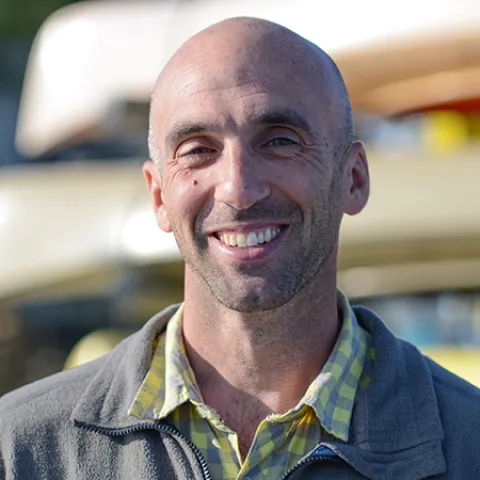
Noah Perlut Comes to the Call of the Wild
Throughout the history of mankind, many a profound thought has been conceived and many a great epiphany has been realized while pulling fish from the earth’s waters. There is something about the act of fishing that has always invited contemplation and introspection. But Noah Perlut’s life-changing moment came not when in pursuit of catching fish, but rather after releasing fish into a river.
An avid fly fisherman as an undergraduate student at James Madison University in the Shenandoah Valley of Virginia, Perlut was put in touch with a state official by the local fly shop owner who had identified Perlut as someone who may be willing to help restock fish in a back country river that had been depleted. Despite a foot of snow on the ground, Perlut agreed to the task and waded into the frigid water to release throngs of fish. The next day, when he returned to where the river outlets from a reservoir, the first pool was brimming with the fish he had released along two miles of river. “There were so many, you could literally put your hand in it and just pull one out.”
The sight made an impact on Perlut, and he began asking himself questions. First he questioned the practice of stocking fish. Then he started to wonder: Are there other animals that tie their migrations to the migration of fish? He realized that these were the sorts of questions that intrigued him. Already a second semester junior, Perlut didn’t want to change his major of English and Speech Communications so late in the game, so he got an internship in wildlife education and used that as a springboard for graduate school. There, he aligned his burgeoning interest in wildlife and the environment with his academic studies, first getting a master’s degree in environmental conservation management and then a Ph.D. in natural resources with a concentration in wildlife biology.
Between his graduate degrees, a variety of internships and field jobs took him throughout North and Central America, including a job rehabilitating injured eagles in Alaska—a job that switched his main focus from fish to birds. Perlut came to UNE from a post-doctoral position in Vermont, and has found UNE to be an ideal setting for his work. “I get to do it all,” he said enthusiastically during a late summer interview in his office on the Biddeford Campus. “I get to research the things that I find exciting; I get to integrate students into my research and share the experience with them. And the physical resources on and around campus are incredible. I teach one class that meets at 6:30 in the morning, and we walk out to the woods and band birds for three hours twice a week.”
Perlut’s passion for his work can be discerned from the sheer number of projects in which he is engaged. From studying the influence of haying and grazing on grassland birds to determining if a federally funded forestry program to increase the quality of forest bird habitat on private lands is working; from evaluating bird communities in the marshes along the tidal waters of the Saco River to following the gray squirrel population via radio collar; from assessing the costs and benefits of rooftop nesting by Herring Gulls to studying the migration patterns of the Caribbean Martin in Dominica, Perlut’s energy for his research is boundless.
A true environmentalist, Perlut often commutes to work—about 12 miles each way—via bicycle or a combination of bicycle and river ferry. The existence of the latter resulted from a pilot study conducted in his Introduction to Environmental Issues class to determine the viability of offering Saco River ferry rides to and from the Biddeford Campus as a means of reducing carbon emissions from cars. (When forced to drive, Perlut uses a hybrid.) He also serves as co-chair of UNE’s Environmental Council, which works to bring positive environmental changes to the University. During the summer of 2013, Perlut was instrumental in the council’s adoption of a student-written plan to reduce the mosquito population on the Biddeford Campus by natural means, such as planting mosquito-repelling plant life and encouraging mosquito-eating bats to roost and birds to nest on campus.
Perlut’s eagerness to collaborate with students and include them in his research may be one of his best attributes as a professor. He gives students plenty of field work experience and even the opportunity to co-author articles for academic journals. When asked how he thinks his students view him, Perlut surmised that they would describe him as “enthusiastic” and as someone who is “not afraid to get a little dirty . . . or muddy . . . or wet.”
Good thing—or he may never have waded into the river to stock fish.
I get to integrate students into my research and share the experience with them.
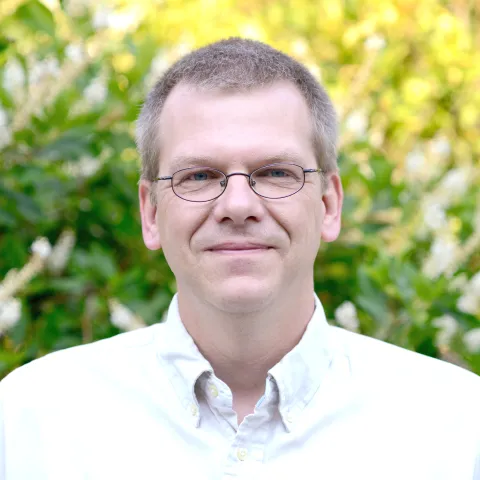
Markus Frederich, Climate Change, and the Future of Crabs
Fifteen years ago, Markus Frederich conducted research for his Ph.D. at the Alfred-Wegener-Institute for Polar and Marine Research in Germany on the question of why there were no crabs in the Antarctic Ocean.
His studies took him to France and as far south as Punta Arenas, Chile. He finally concluded that the problem with crabs is their system’s inability to regulate blood magnesium levels—too much magnesium anesthetizes a crab in cold waters.
But at the end of a paper on his research, he made a "bold statement," predicting that if there was ever a crab that could make it to the Antarctic, it would be Halicarcinus planatus because it was the species with the lowest magnesium concentration in its blood, and global warming might make the Antarctic habitable for the crab.
In 2012 he had a call from a colleague: “Guess what? We found it!”
“It is half a degree warmer,” Frederich says, “and the crabs are there.”
At UNE, Frederich, an associate professor of marine sciences, continues his work on crustaceans, looking at how they deal with stress, especially in the context of global climate change.
Growing up in Germany near Frankfurt, Frederich first got interested in marine science during the vacations his family spent each year on the Atlantic coast of France. “There, I always went to the tidal pools and thought about the critters I would find there. I always found it fascinating, but I was there only three weeks a year.”
It was the pull of the sea that drew him to the University of Bremen for his doctoral work after he completed his master’s degree in biology at the University of Darmstadt, working on a group of ants that were radiated by the nuclear accident at Chernobyl.
But following conventional wisdom within the German academic community at that time, he decided that the safest path to a future research position in Germany was to get some experience abroad, especially in medical biology. He applied to a post-doctoral program at Harvard Medical School and was quickly accepted. He spent the next three years studying the energy metabolism of heart disease, using rats and mice. He was fortunate that his wife was able to follow him to Boston, finding a position in the same research lab. She now works at Maine Medical Center Research Institute.
“I learned a lot at Harvard, and it was a lot of fun, but after those three years I realized I didn’t want to work with rats and mice for the rest of my life — I needed to go back to marine biology. I looked worldwide and came to UNE.”
Frederich now incorporates some of the methods he learned researching energy metabolism at Harvard Medical School in his studies of crustacean stress.
The primary goal is to understand how the animals' systems work in reacting to stress. The second step is to determine how this knowledge can be applied within the context of climate change.
“Which of those animals are well equipped to survive in warmer water, in water with less oxygen, in water with less salinity?” Frederich asks. “There will be clearly some winners and losers. Some species will love it when it gets warmer; others will not make it. By understanding the mechanisms of each species, we can predict this particular species will be able to move further north. This species is maxed out, and it will die.”
Over the past 10 years, about two dozen students have assisted Frederich on projects in his lab that have led to student presentations at regional and national meetings and co-authored publications.
Among several projects, Frederich and his students are currently working on a study to monitor adult green crabs and their larvae in Biddeford Pool, together with a new invasive species that has arrived in Maine, the Asian shore crab.
Not much is known about the impact of the Asian shore crab, which appeared in Maine just five years ago, but Frederich is certain “we will find out very soon.”
Green crabs, which have no commercial value, are an invasive species that was first introduced to the East Coast in the 1870s from Europe. They eat juvenile clams, thus hurting the clam industry, and their numbers appear to be increasing dramatically with warmer water temperatures.
As a matter of fact, after correctly foretelling 15 years ago that Halicarcinus planatus would be the first crab to show up in the Antarctic, Frederich and his colleagues are predicting that green crabs will be the second crab species to turn up in those waters.
“We assume that in 10 or 15 years, we'll get another call: ‘Guess what? we found it!’”
Some species will love it when it gets warmer; others will not make it.
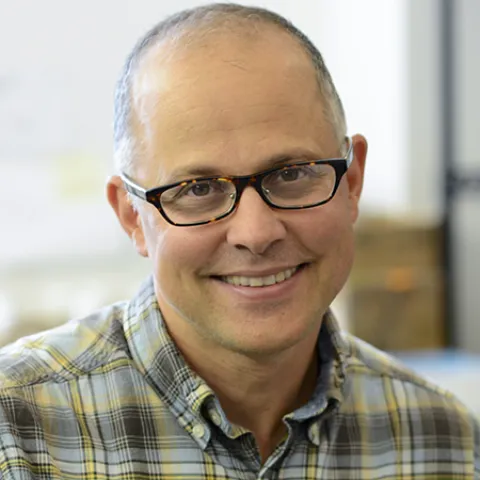
Geoffrey Ganter and his Flies
Fruit flies—those pesky little critters that start buzzing around your head if by chance you forget to wrap that partially eaten peach before setting it on the kitchen counter.
For Professor Geoffrey Ganter, known among students as “The Fly Guy,” those little pests are the beginning of a path to finding future drugs to alleviate chronic pain.
“The fly is a good mix of genetic tools with similarities to other animals.” Ganter explains. “It is similar enough to humans that you can make some correlations between how a part of the nervous system works in the fly and how it is likely to work in a similar way in humans.”
Ganter, who grew up in Massachusetts, first got interested in biology working in his high school’s labs to make a little extra money. He completed his Ph.D. at Boston College studying nitrogen fixation in certain plants, but developed an interest in fruit flies during his post-doctorate research on aggressive behavior at Harvard Medical School. The flies have been the center of his career ever since.
“I’m a curious person. We’re a curious species. I was the kind of kid who liked to take stuff apart to see how it works. Whether I could get it back together or not––it didn’t matter. It was that I got it apart and could see what was making it work. As a biologist I am curious about how living things work. The fruit fly is like the ultimate living gadget—I want to know how it works.”
Fruit fly science began more than 100 years ago. The creatures, which have a generation cycle of about 10 days and a life span of about 30 days, have become one of the most important organisms for taking things apart genetically. A lot of the basics of neurobiology have been determined using fruit flies as a simple model. The fly’s genetics allow scientists to tweak individual genes and individual cells at certain times.
“And once you tweak it, it’s not hard to put it back together and still run,” Ganter says.”That’s what we do in my lab––tweak things genetically and see how that affects the output of that little machine. How does it change its behavior? What does it do differently?”
During any semester about three to seven students work in Ganter’s lab. He believes passionately in the experience of research for undergraduate students.
“When you do something and you come to know some new fact because you did something—that’s a whole new pathway into knowledge in your brain cells. If a student has a good project and pursues it diligently, they will know things that no one else on the planet knows because science is about new knowledge. I think that’s really exciting for them.”
The question that Ganter and his students are focusing on is how a fruit fly’s nervous system dials up and dials down pain and how that can be applied to humans.
Apart from human suffering, each year hundreds of billions of dollars are spent in therapy and lost productivity because of acute and chronic pain. Opioids are the strongest pain relievers but they can cause addiction problems; and there are some kinds of pain that are intractable even to drugs like morphine.
Ganter’s goals using the fruit flies are to develop a model for chronic pain and to identify new drug targets, comparable to the receptors that opioids target, for which new drugs can be designed that will hopefully work better, be less addictive and have fewer side effects.
It’s a long process that, if successful, will take years, if not decades. Ganter is in it for the long run. “We’re not there yet, but we’ve made a lot of progress identifying candidate drug targets. I feel like we’re at the tip of the iceberg. I look forward to the next 10 years and beyond of following these biological pathways along, hopefully identifying major players in the pain modulation system of the fly and maybe having an impact on how pain is treated.”
The fruit fly is like the ultimate living gadget — I want to know how it works.
